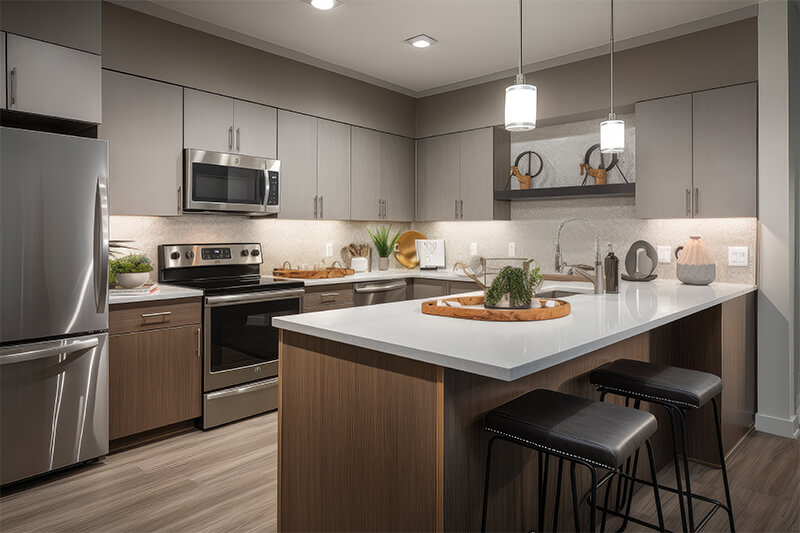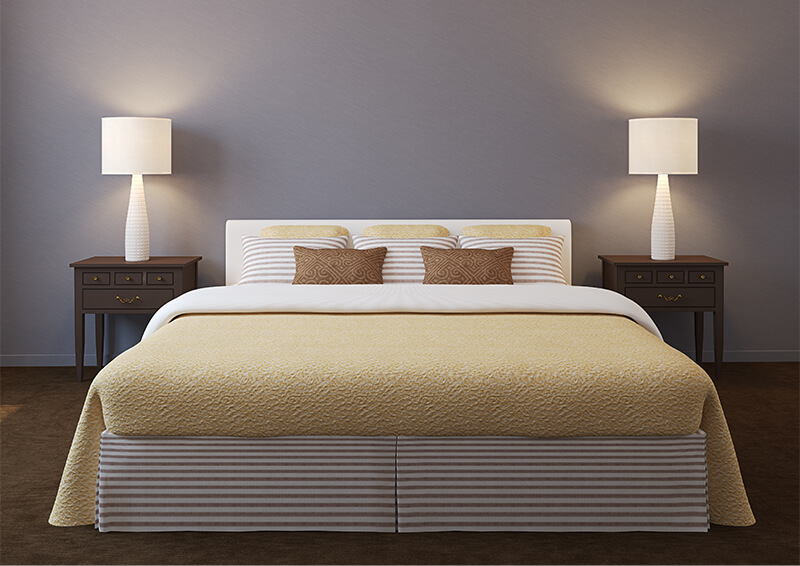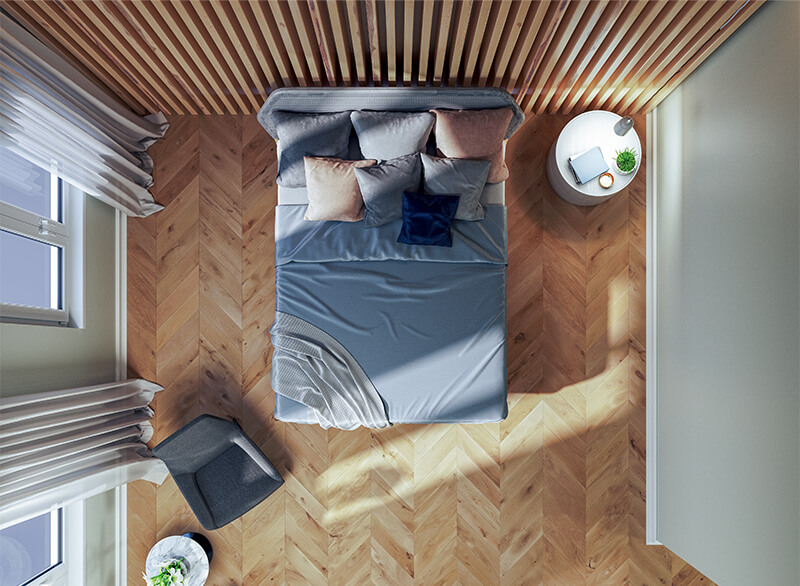3D Lifestyle Renders: The Art of Creative Product Promotions
Is there a guaranteed method you can use to attract some eyes to your website or online store?
Without doubt, beautiful visuals are what typically attract attention. But in what way can you add your own unique touch to make them stand out?

We can safely say that 3D lifestyle product renders are a surefire way to get attention. That’s why you’ll find them in ads, eCommerce sites, print and online catalogs, social media posts, etc.
But what exactly are 3D lifestyle renders?
Well, let’s learn more about this rendering technique by learning what it means first.
What is lifestyle 3D product rendering?
A 3D lifestyle product render is simply a stylized presentation of a product made using computer graphics.
A regular lifestyle product image is a photo of a product in a styled setting. It could be an indoor or an outdoor scene, and can even have people in them.
Whereas, in the case of a 3D product lifestyle photo, various three-dimensional elements (including the digital model of the product) are brought together to create a certain lifestyle scene.
Many manufacturers and marketers today prefer creating 3D lifestyle imagery because it saves money
Important features to have in your lifestyle 3D photos
When making a 3D product lifestyle render, it isn’t enough to just slap some digital elements together randomly. Since the lifestyle imagery is primarily for promotional and marketing activities, the photos should be creative. You need to plan the set, the colors, theme, etc. It’s pretty much the same as the process in a traditional product lifestyle photoshoot; except everything happens in a 3D rendering software.
With that said, we’ve put together some tips that you should include in your photos for better results
-
Tell a story
When making a 3D lifestyle photos, it isn’t enough to match the furniture (for example) with the décor in the scene. You need to tell a visual story through the image. To achieve the perfect visuals, you need to settle on a plot for the scene, after which you can pick the details, mood, colors, textures, and objects in the set.
To give you an example, let’s think about the room of an entrepreneur. What would you expect to find in their home office? A coat rack, functional desk, office chair, files, etc., are to be expected. But what else can you add that will make the setting seem more personal? Maybe you can add a standing desk instead of a regular one? Or you can include a treadmill in the corner?
With these fixtures, you can give the impression that the occupant likes fitness activities. You don’t need words to express what is going on in the shot.
-
Speak to customers on a personal level
 Speak to customers on a personal level
Speak to customers on a personal levelPersonalize the images with visual cues that might trigger an emotional response in the target audience. Your 3D artist can include these emotional elements in the product or the décor. But don’t make them so obvious that they stand out.
Personalizing is especially important when you are advertising, and that is the main reason for making lifestyle product photos. You want the target audience to feel a connection with the product you are selling, or even with your brand. When you personalize the images by adding emotional elements, the chances of catching the target’s attention increase.
Say, for example, you’re selling electric home kitchen equipment. You can set the scene of a small 3D kitchen and add items like fridge magnets, family photos, house plants, handmade oven mitts, bibs, pets, etc., to trigger some sort of memory for the target audience. These elements will make the kitchen feel familiar and homely.
-
Use the right angles
The angles you use in your lifestyle product renders also influence its appeal. In photography, there are many angles, but there are three that are suitable for product renders- straight eye-level, bird’s eye level, and low angle.
-
Straight eye-level angle
 Straight eye-level angle
Straight eye-level angleit’s the angle from which a person of average height looks at an object or a room from the front. Eye-level angles are very commonly used in lifestyle photos, especially when furniture is involved. You get a wide view of the entire scene so you can clearly see the full product.
-
Bird’s eye angle
 Bird’s eye angle
Bird’s eye angleit’s a view of the 3D scene from above. This angle is to give you a closer view of the items in the scene. For example, use this angle to show how specious the top of your desk is.
-
Low-angle
 Low-angle View
Low-angle Viewit’s a view of the product from a lower angle (the camera is placed below the eye-level). So, basically, you’re looking up at the product from below. Hence, it’s also known as the worm-s eye angle. The intention is to make the object look grand or sophisticated.
These angles are all easy to get using CGI. You can place the camera at any angle within the software to get the best photo angle.
Useful Article : Top 10 Best Camera Angles for Real Estate 3D Renderings
-
-
Convey a mood
The mood you set in the scene is crucial for the story you are telling. The mood can be anything from cozy to vibrant, dramatic, and fun. Use the mood that you want associated with your product and brand.
-
Use the right photo composition
In a 3D lifestyle product photo, the composition of the scene is very pertinent. What object is placed where, what details are included, everything matters. Moving the main product from the center to the side, adding details to the product, or removing details, changes the whole composition of the image.
There are certain rules to photo composition that help guide the arrangement in a photo. They’ll help you highlight the product and immediately grab the viewer’s attention at the same time. The rule of thirds is one of them. When compositing a photo, you need to make sure that everything within the frame complements each other.
-
Showcasing the product dimensions
Placing the product in the same scene as other familiar objects helps the viewer get an idea of its dimensions just from a look. Most people know how big a footstool is, so placing it next to a lounge sofa will indirectly tell you how big the stool is.
-
Targeting the right audience
Lifestyle photos are created in a way that relates to a certain group of people- your target audience. Relating to and connecting with this target audience is one of the best ways to convert them into paying customers.
-
Promote design varieties
If you have multiple varieties of the same product, you can create different lifestyle scenes for each version.
-
Convey luxury or performance
This is one of the main reasons why lifestyle product photos are popular in advertising. Lifestyle photos can help you position your products or brand as luxurious or powerful. All you have to do is present your products in scenes with specific celebrities, objects, or lifestyles that have the same vibes. The more you use these visuals, the stronger the connection with these attributes becomes in people’s minds.
-
Showcase the product’s purpose
Marketers sometimes use different lifestyle settings to showcase how the same product can be used in different ways. For example, the same serving tray can be used as a centerpiece of your coffee table, or a tray to hold magazines.
-
Forming an emotional connection
Lifestyle product photos are mainly created to make the target audience feel a personal connection with the product, brand name, or company. The efforts are a success if even one person forms an emotional bond with the product.
Its importance in marketing
I think we’ve all seen examples of lifestyle product photos in the manufacturing, automobile, furniture, and even retail industries. The idea is to form a strong connection between a product and a lifestyle or class in the customer’s mind as naturally as possible. When you successfully make this connection, people from that category automatically think of your product when they want to have that lifestyle.
Take Ferrari for example. When you think of Ferrari cars, what lifestyle automatically comes to mind? This is the result of years of advertising their cars as a symbol of performance, wealth, and power. They, of course, use various methods and mediums apart from photos, but the intention is the same.
Let’s go over some of the main reasons why marketers love using lifestyle renders in their marketing.
So, what can we take away from this?
3D lifestyle product photos are simply a 3D equivalent of regular lifestyle photos. But, there’s more scope for creativity in the product presentations. On top of it all, lifestyle renders can be made quickly, easily, and cost-effectively. All you need is a good 3D artist who can follow the instructions to meet your exact vision.
In the end, 3D lifestyle product renders are an important part of marketing efforts. And, with AR, VR, and other visualization technologies becoming more common and accessible, lifestyle renders will be even more vital.
Get in touch!

